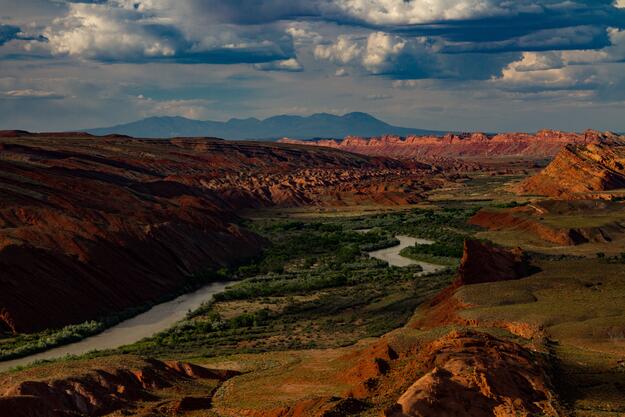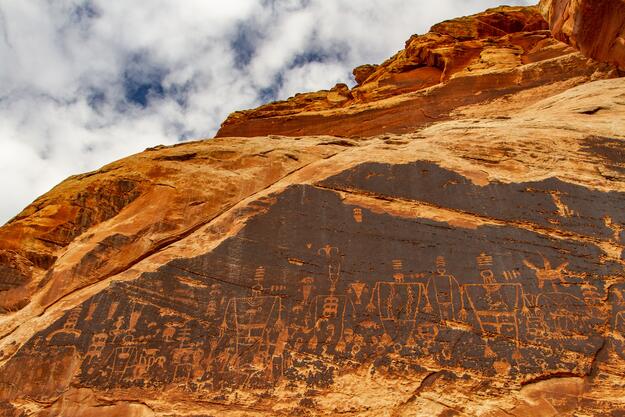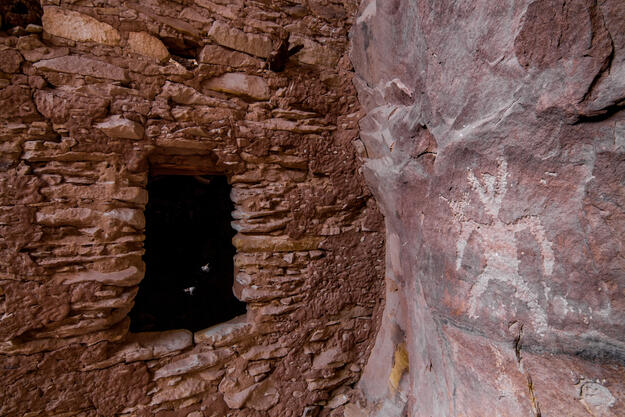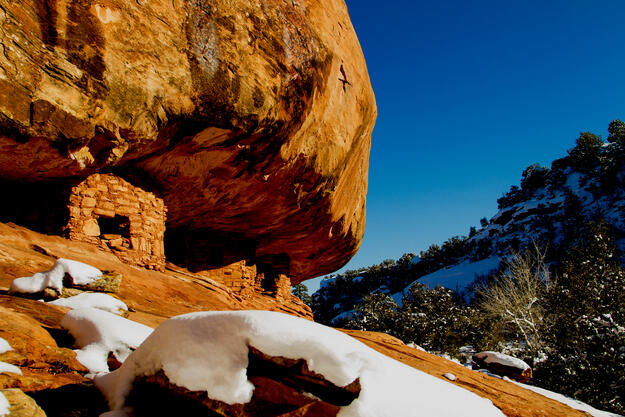Bears Ears National Monument
Site History and Significance
A Rich Cultural Landscape
The cultural and archaeological resources of Bears Ears National Monument, located in modern-day southeast Utah, include thousands of ancient cliff dwellings, community centers, rock imagery, and artifacts. They are scattered through deep, twisting canyons, located in caves, and perched on narrow ledges high on sheer rock faces. Bears Ears remained undisturbed until the mid-nineteenth century, when European settlers began to explore the landscape following the forced removal of its Indigenous residents. The state and federal governments have owned and managed sacred ancestral lands of tribes throughout the twentieth century.
With over 13,000 years of human history recorded throughout the Bears Ears region, this is a living landscape dependent on the reciprocal relationship between traditional human uses and natural ecologies. Today, however, the site’s future is uncertain.
Bears Ears National Monument Reduced
The Bears Ears Inter-Tribal Coalition, representing five sovereign nations, has steadfastly advocated for the protection of their ancestral lands. As one of his last acts of office, President Obama designated 1.35 million acres of southeastern Utah as the Bears Ears National Monument. A year later, the Trump administration reduced the site to just over 200,000 acres. The proposed management plan for the reduced area, released in July 2019, permitted utility lines, access roads, recreational off-road vehicles, destructive cattle grazing, and industrial mining activities. In addition to concerns stemming from the management plan, Bears Ears continues to see an increase in looting, vandalism, and the desecration of Indigenous burial sites.
Our Involvement
2020 World Monuments Watch
Between burgeoning visitation (now estimated at 450,000 people per year) and the natural and human-caused degradation of archaeological sites, the challenges facing Bears Ears are formidable. The Greater Bears Ears Partnership (formerly Friends of Cedar Mesa), a local group working in the region for over a decade, has implemented protections to ensure the respect and protection of natural and cultural resources throughout the landscape. Their collaboration with regional tribes to establish a viable working relationship between the government and tribal representatives has increased protections by partnering with cultural heritage specialists to safeguard sensitive areas.
World Monuments Fund (WMF) included Bears Ears on the 2020 World Monuments Watch in a call for the U.S. government to reconsider its plan to harm rather than protect the sacred lands and sites of the Tribes and Pueblos in North America. Following the site’s inclusion on the Watch, WMF launched a project in partnership with the Greater Bears Ears Partnership to address current and anticipated destruction and damage. The project will consist of cultural resource assessments, site stabilization and preservation work, and visitor services improvements, including site interpretation and educational signage.
Restoring Protection to the Site
In October 2021, the Biden administration restored protection to Bears Ears National Monument, reversing Trump’s decision to reduce the protected area by nearly 85 percent. The Bears Ears Commission, composed of tribal representatives and Elders, will provide continued guidance and recommendations on a new collaborative management model between the Tribes and state and federal land agencies.
Learn More
World Monuments Fund safeguards cultural heritage around the globe, ensuring our treasured places are preserved for present and future generations.
Sign up for our newsletter to receive regular updates on our projects, stories from the field, upcoming events, and more!
![]()
World Monuments Fund's work at Bears Ears National Monument has been made possible, in part, by support from Butler Conservation; Gregory Annenberg Weingarten, GRoW @ Annenberg; the Friends of Heritage Preservation; and by Nora McNeely Hurley and Manitou Fund.




